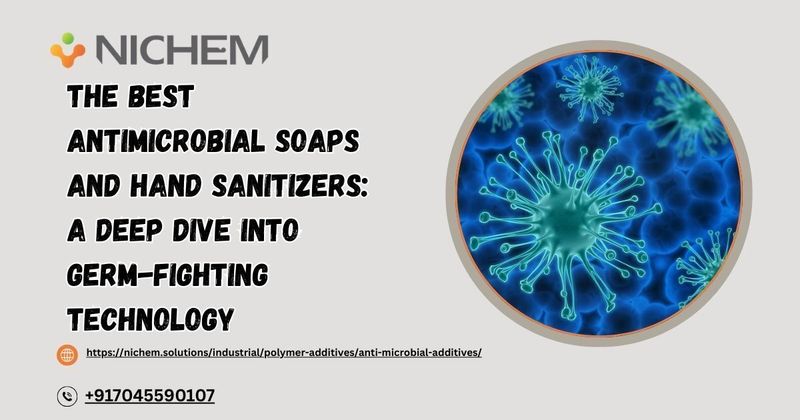
In today's health-conscious world, the terms "antimicrobial" and "antibacterial" have become common household words. But what do they really mean, and what role do they play in keeping us safe? When it comes to hand hygiene, choosing the right products is a critical first step. This blog will explore the world of antimicrobial soaps and hand sanitizers, helping you make informed choices for your family's health.
Understanding Antimicrobial vs. Antibacterial: The Critical Distinction
Before we dive into product recommendations, it's essential to clarify the key difference between these two terms. While they are often used interchangeably, they don't mean the same thing.
Antibacterial agents are specifically designed to kill or inhibit the growth of bacteria. These are the most common active ingredients you'll find in many "antibacterial" soaps and household cleaners. Their scope is limited to a single class of microorganisms.
Antimicrobial, however, is a much broader term. An antimicrobial agent works against a wider range of microorganisms, including not only bacteria but also viruses, fungi, and parasites.
So, while all antibacterial products are technically antimicrobial, not all antimicrobial products are solely focused on bacteria. In a world where we face threats from various pathogens, opting for a product with true antimicrobial properties can provide a more comprehensive layer of protection. This distinction is particularly important in healthcare settings, public spaces, and during flu seasons, where a broader defense is necessary.
The Best Antimicrobial Soaps: What to Look For
While the FDA has noted that plain soap and water are often just as effective as antibacterial soaps for everyday use, antimicrobial soaps are still vital in certain settings, such as healthcare or when dealing with specific contamination risks. When choosing a soap, look for products that contain active ingredients known for their broad-spectrum efficacy.
Benzalkonium Chloride: This is a common antibacterial agent used in many foaming hand soaps. It's effective against a wide range of bacteria and is generally considered safe for frequent use. Its effectiveness comes from its ability to disrupt the cell membranes of bacteria, leading to their destruction.
Essential Oils and Plant-Based Extracts: The natural world offers a wealth of antimicrobial compounds. Some products use essential oils and plant-based extracts, such as tea tree oil, eucalyptus, or thyme. These natural ingredients can be effective, but their potency can vary depending on their concentration and the formulation of the product. It's always best to choose products that have been scientifically validated to ensure they meet a certain standard of efficacy.
Hypochlorous Acid: Increasingly popular in some professional and medical-grade products, hypochlorous acid is a powerful disinfectant that is also gentle on the skin. It's a compound naturally produced by the human body's immune cells to fight infections. As an active ingredient, it's highly effective at killing a wide range of pathogens without causing the irritation often associated with harsher chemicals.
It's crucial to remember that the most important part of handwashing is the mechanical action—scrubbing your hands for at least 20 seconds to physically dislodge germs and dirt. Even the most advanced antimicrobial soap won't work if it's not applied correctly.
The Best Antimicrobial Hand Sanitizers: A Quick and Effective Solution
Hand sanitizers are a convenient and effective way to clean your hands when soap and water aren't available. However, not all sanitizers are created equal. The key to an effective hand sanitizer is its alcohol content.
Alcohol-Based Sanitizers: The CDC recommends using hand sanitizers that contain at least 60% alcohol (ethanol or isopropanol). Alcohol works by denaturing the proteins of microorganisms, effectively killing them. Many of the most trusted brands, such as Purell and Dettol, are known for their high alcohol content and proven efficacy against bacteria, viruses, and fungi.
Non-Alcohol Sanitizers: While some non-alcohol sanitizers exist, they often rely on other antimicrobial agents like benzalkonium chloride. While these can be effective against some germs, their effectiveness against certain viruses and other pathogens may not be as reliable as alcohol-based options. It’s essential to choose products that are backed by strong research and are recommended for the specific pathogens you are trying to avoid.
Antimicrobial Technology Beyond Soaps: The Role of Additives and Coatings
The fight against microbes isn't limited to our personal hygiene products. Antimicrobial additives for plastics are now a major component in the manufacture of plastic products and other everyday items, creating a new line of defense against germ transmission.
Antimicrobial Additives for Plastics: Manufacturers are incorporating these additives into plastic resins during the production process. The result is a plastic product with built-in antimicrobial properties that continuously inhibits the growth of bacteria, fungi, and other microbes on its surface. This technology is a game-changer for high-touch surfaces, from door handles and light switches to medical equipment and children's toys. The additives, which can include silver, copper, or other compounds, are integrated into the polymer matrix, providing a durable and long-lasting antimicrobial effect.
Antimicrobial Coatings: These specialized coatings can be applied to almost any surface—walls, floors, furniture, and even textiles. They create a protective layer that actively kills or prevents the growth of microbes, providing long-lasting sanitation in homes, offices, and healthcare facilities. These antimicrobial coatings can use a variety of technologies, including photocatalytic reactions, which break down microbes on contact with light, or the slow release of metal ions, which are toxic to microorganisms.
These innovations highlight a fundamental shift from reactive cleaning to proactive protection, making our environments inherently safer and cleaner. By understanding the science behind antimicrobial products and technology, we can make better decisions for our health and well-being, both in our personal habits and in the products we choose to bring into our homes. It’s a testament to how advanced chemistry and manufacturing are working together to build a healthier world.



Top comments (0)